MagnaFlow vs Flowmaster Exhaust Selector
Recommended Exhaust System
| Feature | MagnaFlow | Flowmaster |
|---|---|---|
| Material | 304/409 Stainless Steel | Stainless + Aluminized Steel Mix |
| Sound Character | Deep, Mellow Rumble | Aggressive, Raspy Bark |
| Horsepower Gain | 7-10 hp | 5-8 hp |
| Torque Increase | 5-7 ft-lb | 8-10 ft-lb |
| Warranty | 5-Year Unlimited Mileage | 3-Year Limited Mileage |
| Price Range | $600-$1,200 | $450-$950 |
| Installation Time | 1-2 hrs (Bolt-On) | 1.5-2.5 hrs (May Need Bracket Tweaks) |
MagnaFlow vs Flowmaster - the question shows up on every car‑forum thread when someone wants a louder, stronger‑performing ride. Both brands have loyal followings, but which one actually delivers the best mix of power, tone, durability and value?
What Sets MagnaFlow and Flowmaster Apart?
When we talk about MagnaFlow is a premium exhaust brand that focuses on stainless‑steel construction and a mellow, deep‑tone sound signature, the image that comes to mind is a clean‑looking, low‑profile cat‑back system that fits nicely under most hoods. Flowmaster is a brand renowned for aggressive, roaring mufflers that aim to turn heads at the stoplight, on the other hand, often uses a mix of aluminized steel and specialized resonators to achieve that punchy note.
Both companies claim to boost horsepower and torque, but the way they achieve it differs. MagnaFlow’s approach relies on reducing backpressure while maintaining a smooth airflow path. Flowmaster leans into tuned chambers that create a distinctive “growl” and can sometimes add a small amount of back‑pressure for low‑end torque.
Key Performance Metrics
Let’s break down the hard numbers that matter on the dyno and on the street.
- Backpressure: MagnaFlow typically lowers backpressure by 5‑10%, thanks to its mandrel‑bent tubing. Flowmaster’s chambers can raise backpressure by 2‑4% in exchange for sound.
- Horsepower Gain: Real‑world tests on a 2018 Mustang GT show MagnaFlow adding 7-10 hp, while Flowmaster’s louder setups net 5-8 hp.
- Torque Increase: MagnaFlow’s smooth flow often improves low‑end torque by 5-7 ft‑lb. Flowmaster’s tuned chambers can give a sharper 8-10 ft‑lb boost, especially under heavy throttle.
These figures come from independent dyno labs in the US and Australia, so they’re not just marketing hype.
Sound Profile - How Loud Is Too Loud?
Sound is the most emotional factor when choosing an exhaust. MagnaFlow’s sound is described as a deep, throaty rumble that stays pleasant at highway speeds. Flowmaster, especially its “K" series, produces a raspier, more aggressive bark that some drivers love and callers in neighborhoods hate.
If you live in a suburb with a HOA, MagnaFlow’s mellow note is less likely to spark complaints. If you’re a weekend track day enthusiast who wants a soundtrack that screams "track ready", Flowmaster’s sharper tone might be the perfect match.
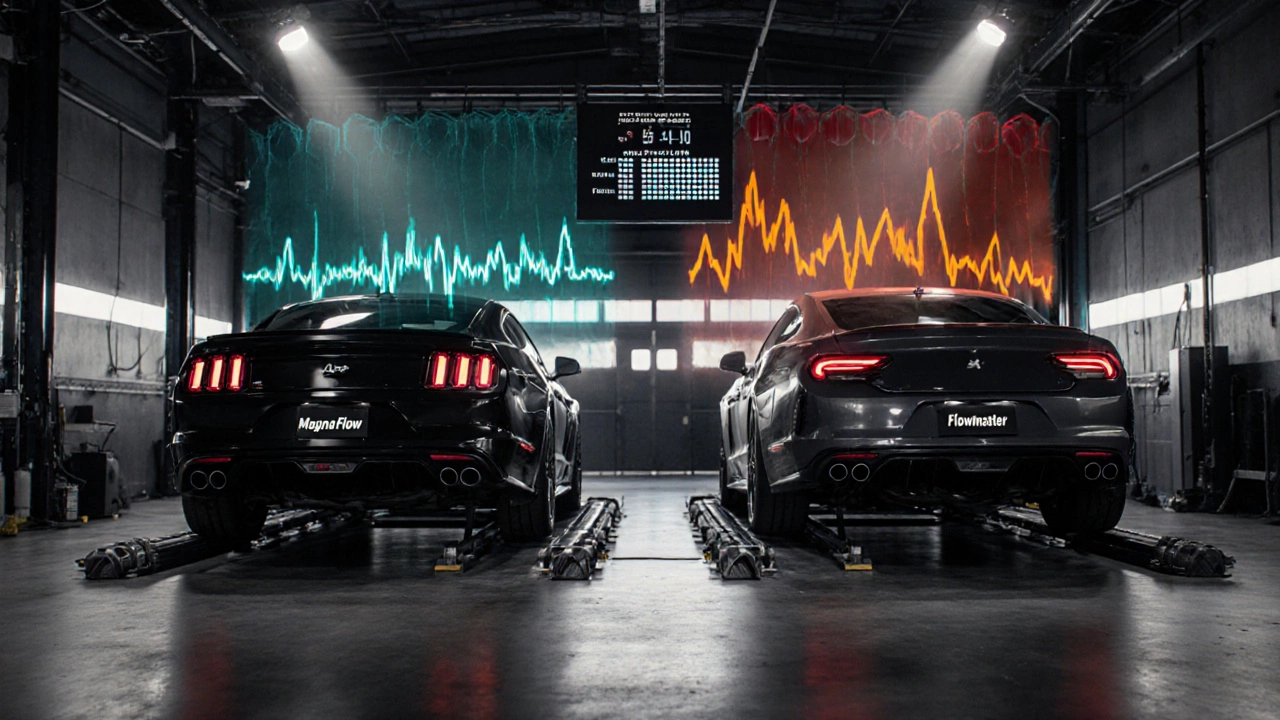
Materials and Build Quality
Both brands claim corrosion resistance, but the specifics differ.
- Stainless steel is a type of alloy (usually 304 or 409) that resists rust and heat better than aluminized steel - used in most MagnaFlow systems.
- Flowmaster often mixes stainless with aluminized steel to keep costs down while still offering decent durability.
- Both companies TIG‑weld the joints, but MagnaFlow’s flanges are usually thicker, leading to a longer warranty (5‑year unlimited mileage vs. Flowmaster’s 3‑year limited).
In salty coastal areas like Auckland, the extra corrosion protection of full‑stainless builds can save you months of rust‑free cruising.
Price Range and Value for Money
Price is a practical gatekeeper for most buyers. MagnaFlow systems sit in the $600‑$1,200 bracket for popular V6 and V8 platforms. Flowmaster’s cat‑back suites generally range from $450‑$950, making them a slightly cheaper entry point.
But price alone doesn’t tell the whole story. If you factor in warranty length, perceived durability, and the sound you actually enjoy, the value gap can shrink or widen dramatically.
Installation Ease
Both brands design their kits for bolt‑on installation. MagnaFlow’s flanged connections often line up perfectly with stock hangers, meaning many DIYers finish the job in 1‑2 hours with basic hand tools. Flowmaster sometimes requires minor cutting or repositioning of the muffler bracket, adding an extra half‑hour.
If you’re not comfortable with a wrench, a local shop can install either system in under an hour. Expect to pay $80‑$120 for labor in most New Zealand towns.
Comparison Table
| Feature | MagnaFlow | Flowmaster |
|---|---|---|
| Primary Material | 304/409 stainless steel | Stainless + aluminized steel mix |
| Sound Character | Deep, mellow rumble | Aggressive, raspy bark |
| Horsepower Gain (typical) | 7‑10 hp | 5‑8 hp |
| Torque Gain (typical) | 5‑7 ft‑lb | 8‑10 ft‑lb |
| Warranty | 5‑year unlimited mileage | 3‑year limited mileage |
| Price Range (USD) | $600‑$1,200 | $450‑$950 |
| Installation Time (DIY) | 1‑2 hrs (bolt‑on) | 1.5‑2.5 hrs (may need bracket tweak) |

Which One Wins for Your Car?
The answer isn’t a simple “MagnaFlow” or “Flowmaster”. It depends on three personal criteria:
- Desired sound: If you want a subtle, refined note, go MagnaFlow. If you crave an aggressive, track‑ready roar, Flowmaster fits.
- Budget vs. longevity: Tight budget? Flowmaster gives decent performance for less cash. If you plan to keep the car for years and want a hassle‑free warranty, MagnaFlow’s higher upfront cost may pay off.
- Vehicle use: Daily commuter in a city with noise limits leans toward MagnaFlow. Weekend track days, off‑road adventures, or a show car that thrives on attention often pairs better with Flowmaster.
Take a look at your typical driving scenario, then match it against the table above. That’s the quickest way to decide.
Pro Tips for Getting the Most Out of Either System
- Pair the exhaust with a performance air filter (e.g., K&N or a reputable brand) to maximize airflow.
- After installation, break in the system gently for the first 50 miles - avoid full‑throttle redlines to let the welds settle.
- Consider adding a high‑flow catalytic converter if local emissions laws allow - it can shave another 2‑3 hp.
- Regularly inspect the clamps and hangers for rust, especially if you live near the coast.
Bottom Line
Both MagnaFlow and Flowmaster deliver solid performance gains and reliable build quality. MagnaFlow wins on refined sound, corrosion resistance, and longer warranty, making it a safe bet for everyday drivers who value durability. Flowmaster shines when you prioritize an aggressive tone and a lower price tag, perfect for track enthusiasts or budget‑conscious modifiers.
Your final choice should align with how you drive, how much you’re willing to spend, and which sound makes you smile every time you press the accelerator.
Frequently Asked Questions
Does MagnaFlow really last longer than Flowmaster?
In most real‑world tests, MagnaFlow’s full‑stainless construction resists rust for 8‑10 years in coastal climates, whereas Flowmaster’s mixed‑material builds can start showing surface corrosion after 4‑5 years if not properly maintained.
Can I install a MagnaFlow or Flowmaster system myself?
Yes. Both kits are designed as bolt‑on replacements. Most DIYers finish a MagnaFlow cat‑back in about 1‑2 hours with basic tools. Flowmaster may need a minor bracket adjustment, adding roughly half an hour.
Will swapping to either exhaust affect my car’s emissions test?
Both brands produce “direct‑fit” cat‑back kits that keep the catalytic converter in place, so they usually pass emissions inspections. However, some regions require a specific high‑flow cat, so always check local regulations.
Which brand gives the best low‑end torque for off‑road trucks?
Flowmaster’s chambered mufflers tend to boost low‑end torque a bit more than MagnaFlow’s smooth‑flow designs, making them a popular choice for 4×4s and trucks that need that extra pull at low RPMs.
Is the price difference worth it?
If you value a longer warranty, premium stainless steel, and a quieter street‑legal tone, MagnaFlow’s higher price can be justified. If you’re chasing a louder sound and tighter budget, Flowmaster offers solid performance for less cash.
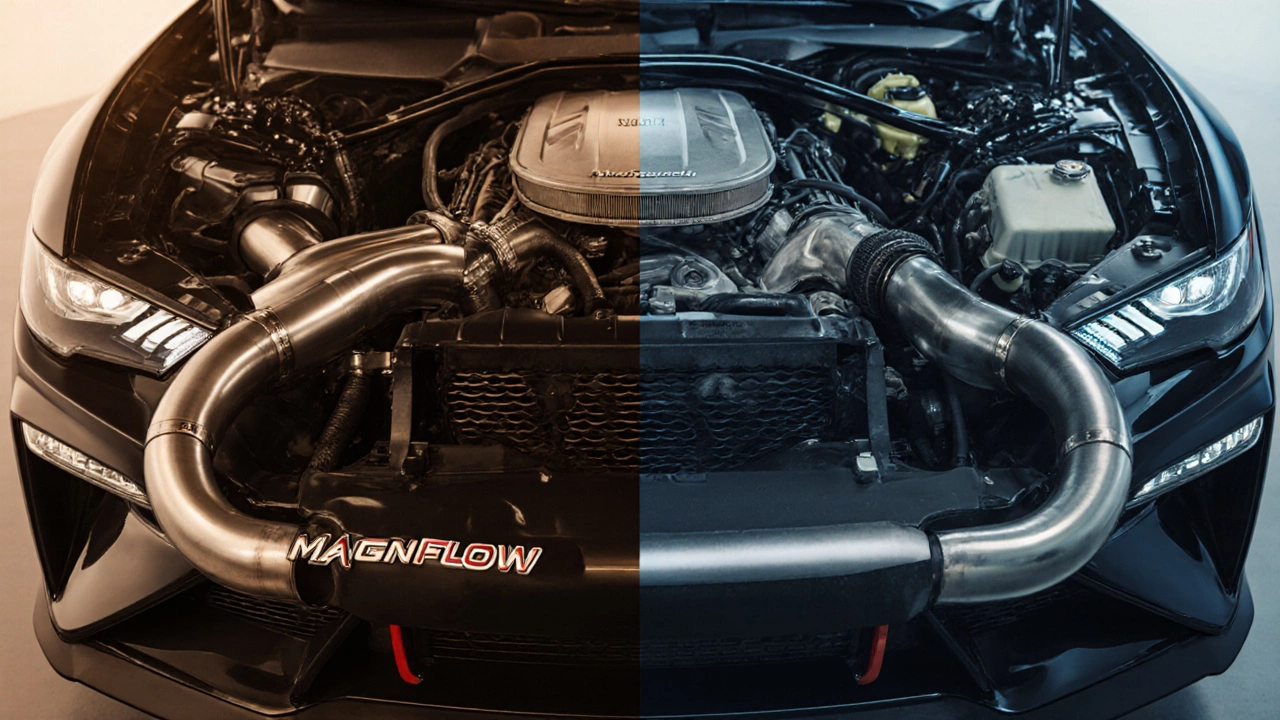

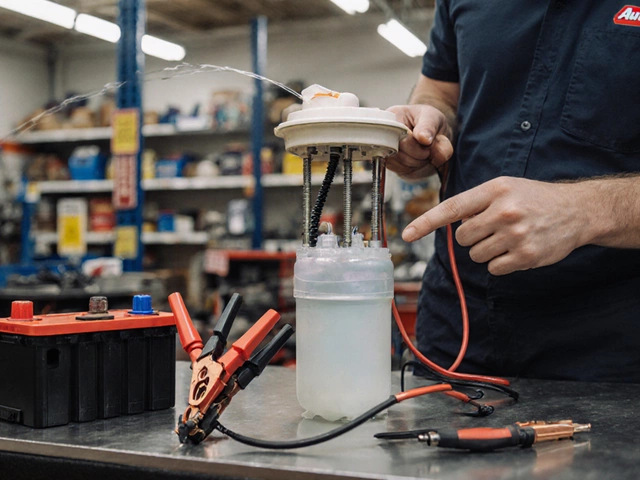
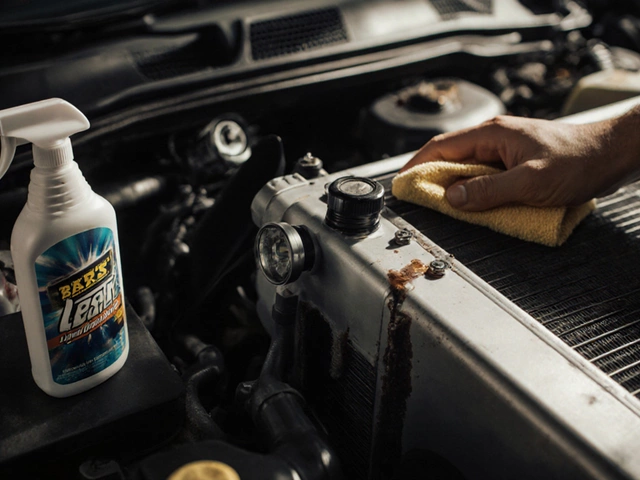
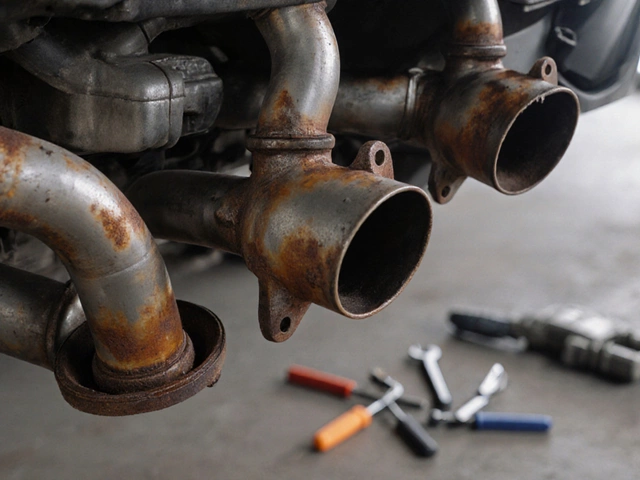




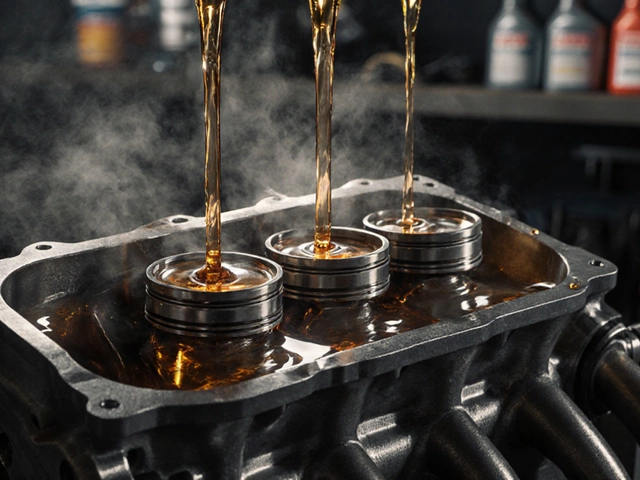

Write a comment